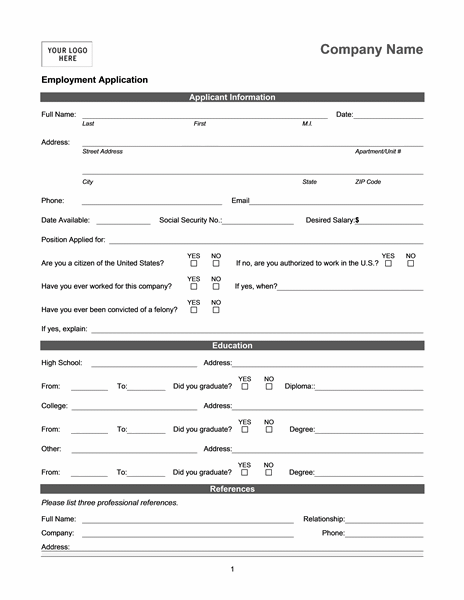
Getting paperwork under control makes me feel more in control of my life generally.

Getting paperwork under control makes me feel more in control of my life generally.

The resume is one of the most important steps in the job application process. Your resume tells the employer about your background and past job experience. Your resume should be concise, consistent, and easy to read. A well-written resume
highlights your most relevant qualifications for the job, getting you the interview that you want. It is typically one page long.
How to write the perfect resume:
I. Choose a type of resume.
There are several different types of resumes. Choosing a type depends on your own preferences or on the job you're applying for. Some different types are: chronological, functional, combination, targeted, etc. The most common and most basic
type is a chronological resume, although you may want to look into other types based on whether or not you want to focus on your key accomplishments and skills rather than past experiences. Nevertheless, choosing the best type of resume is
critical in building a great resume.
II. Choose and maintain a style.
Make sure to choose a font style and size that is easy to read and fits well on the page. Try to keep style features - such as bold, italics, and underlining - to a minimum. These can be reserved for making your key information stand out to
your employer. Use the style you choose consistently throughout your resume.
III. Research and look over examples.
Review resume samples in order to get yourself familiar with formats and the type of information you need.
IV. Use resume keywords.
Make sure your resume uses keywords that pertain directly to the jobs you are seeking. These keywords will help your employer to find your resume online and eventually selected for evaluation.
V. Proofread!
Look over your resume before sending it. Make sure there are no spelling or grammatical errors, as well as any style inconsistencies. Consider having someone look it over to ensure that there are no errors.
Sections of a resume:
I. Contact information.
Be sure to include:
- Name
- Mailing address
- Telephone number
- Email address
- Link to online portfolio
- LinkedIn profile
II. Introduction paragraph.
There are three choices for a resume introduction: a qualifications summary, career profile, and professional profile. The goal of this introductory paragraph is to stand out to your employer by highlighting your skills and experience that
are relevant to the company.
Qualifications Summary: a bullet-point list (usually 4 to 6 bullets) of your key career achievements.
Career Objective: a 2-3 sentence statement providing an overview of your skills and experience.
Professional Profile: a combination of the qualifications summary and the career profile.
III. Professional Experience.
Be sure to list your work experience in reverse chronological order and only list experience that is relevant to the job you are applying for. Include a heading for each company that includes its name, location (city & state), your title,
and the dates of employment. Each experience should have 3-5 bullets of your main responsibilities and achievements.
IV. Education.
Be sure to include:
Names of the schools you attended after high school
Location of the schools
Date of graduation
Degrees
GPA
Resume Templates:
Chronological Resume:
The most common type of resume. Work experience is listed in reverse chronological order, from most to least recent.
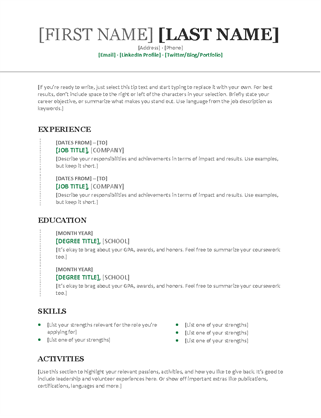
Functional Resume:
A functional resume is used to highlight and emphasize the applicant's skills and experience, rather than past jobs.

Combination Resume:
A mix of a functional resume and a chronological resume, the combination resume allows the applicant to present his or her skills and job experience in chronological order.
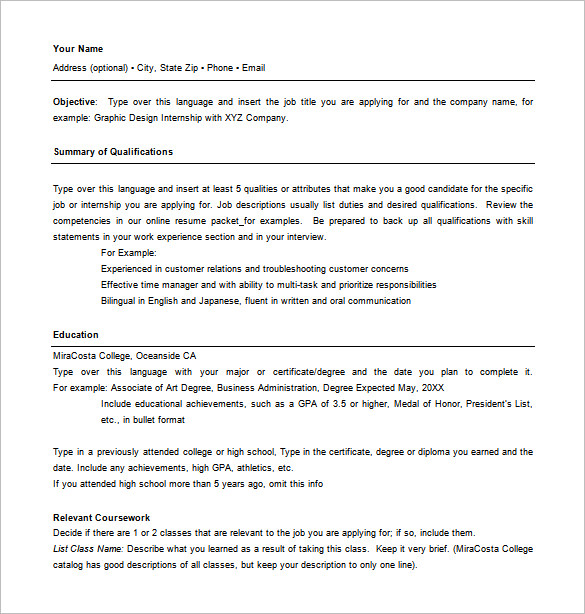
Targeted Resume:
A targeted resume highlights the experiences and skills relevant to the job that the applicant is applying to.
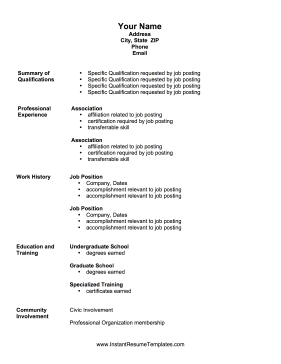

Cover letters are one-page documents that are meant for you to introduce yourself, explain why you would be a good fit for the job, expand on areas that your resume cannot describe, and further explain other aspects of your resume.
How to write a cover letter:
I. Contact Information.
Include both your employer and your contact information--name, your home address, your employer's company address, phone numbers, and emails.
II. Introduce yourself.
In your first paragraph, being by telling your employer the position you are applying for and how you learned about the job opening. Include information about yourself, such as your degree, area of study, and your career goals.
III. Sell yourself!
The second paragraph should include your previous job experiences, skills, and abilities and how these make you a good fit for the job.
IV. Go the extra mile.
Do research on the company to find out more about them as a whole--their goals, purpose, etc. In your third paragraph, include how you can contribute to the company's goals and help push the company forward.
V. Conclusion.
In your final paragraph, show the employer your interest in the job--inform them of your desire to be interviewed, tell them you'll be in contact with them within a week or so. Lastly, don't forget to thank them for reading your letter.
Cover Letter Template:
Download this template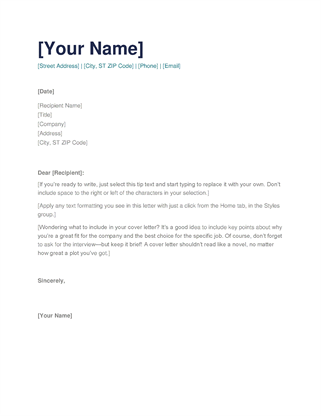

An application form is used to collect relevant, accurate information from the applicant. Oftentimes, this will include information not usually found on your cover letter or resume, such as personal and professional references or the names of former supervisors. These forms are often used to test the applicant's ability to follow instructions, penmanship, literacy, and communication skills.
How to complete an application form:
- Make sure you know correct dates, names, places, and other information you will need
- Contact the people you want to use as references: make sure you know their information and contact details
- Think about what you have to offer and what makes you stand out
- Read the job description to find out what types of skills and experiences they are looking for
- Give yourself enough time
- Draft your answers before filling out the form
- Make sure your answers are relevant, interesting, and personal
- Fill out the form neatly
- Read and follow instructions carefully
- Don’t leave any blanks
- Don’t provide any negative information
- Answer all questions truthfully -
DON’T LIE
- Do not give specific salary requirements
- Keep your application consistent with your resume
- Proofread your application before submitting it--make sure there are no spelling/grammar mistakes
Application Form Template:
Use this template for application forms that are to be submitted electronically.
